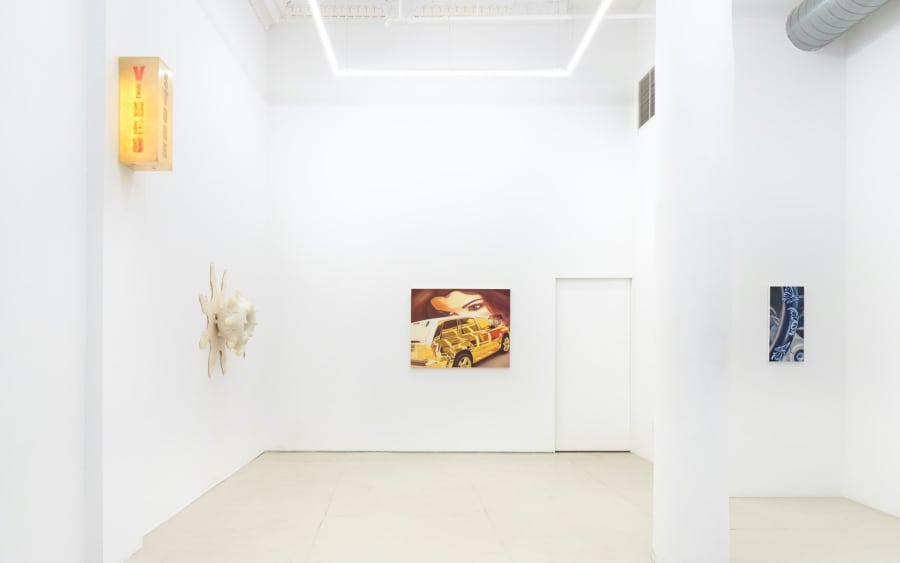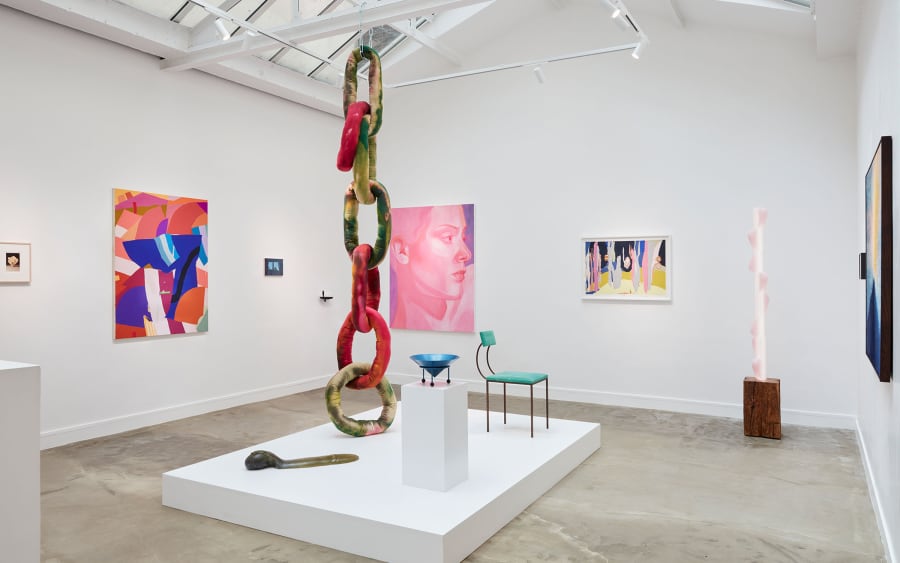Artists are increasingly choosing alternative channels and middlemen through which to show and sell their work – from artist-led galleries to agents and apps.
High-profile examples include Damien Hirst – who often releases primary market works on Heni, a publishing platform founded by the London lawyer Joe Hage – and Peter Doig, who last year announced his departure from Michael Werner Gallery after 23 years together. Now gallery-free, Doig is also managed by Hage, as is Gerhard Richter.
Of course, Hirst is still represented by White Cube and Gagosian, and Richter by David Zwirner, but what is emerging is a more hybrid approach. Collaboration and community are fast becoming buzzwords, and not only among grassroot setups. Take Hauser & Wirth, for example, which has recently begun to share representation with several emerging and smaller galleries.
Rapidly developing technologies, particularly when it comes to social media, have amplified artists’ exposure to much broader audiences and put them in direct contact with buyers and potential partners. Although the data suggests relatively few sales are closed this way, The Art Basel and UBS Survey of Global Collecting 2023 points out that Instagram and other social media platforms ‘can often be used as the initial discovery channel for sourcing and discovering new works and artists, with the actual sale itself then made through a gallery or fair, at auction or sourced directly from the artist.’
According to Will Jarvis, the chief executive of Gertrude, an app that provides content about artists as well as functioning as a marketplace to buy their art, galleries are still king – though he stresses that changes to the current system are much needed. ‘There is no replacing the “in real life” experience of art, and most of our business is done in relation to something else, whether we’re doing an event or partnering with a gallery,’ Jarvis says. ‘Gertrude is about expanding, not replacing the existing model.’
Indeed, the data suggests that, while gallery representation has wavered in recent years, the figures remain relatively constant. According to The Art Basel and UBS Art Market Report 2024, the average number of artists represented by dealers in the primary market dropped from 25 in 2017 to 19 in 2022 but rebounded to 23 in 2023.
Nonetheless, there are elements of the current system that need to change, Jarvis suggests. ‘When it comes to artists, our job is to help them walk the fine line between autonomy and their own drive to have a career, but for them to also remain eligible for the very nuanced terms of the gallery system,’ he says. Gertrude helps artists keep track of their studio inventory via a database as well as providing an e-commerce function that allows them to choose which works to list publicly for sale. Artists are also notified of new followers and likes via the app, enabling them to monitor interactions with potential collectors.
Much like a gallery, Jarvis and his team also work closely with artists to promote their work to new audiences and networks, offer career consultations, and support with documents such as consignment agreements and certificates of authenticity. Gertrude also partners with galleries to mount and market physical exhibitions, charging between 10% and 25% on sales depending on the level of involvement.
Jarvis describes Gertrude as a subterranean mycelial network, ‘supporting the ecosystem in a similar way to how mycelium supports a forest – distributing nutrients across the network and supporting artists with knowledge of how to navigate the art world.’ He adds: ‘Our aim, for both prospective new buyers and for artists, is to help educate and empower. We’re committed to portraying as close a truth as possible, using technology, so that artists are autonomous and can make decisions based on that information.’
Increasing artists’ autonomy has been at the forefront of several new ventures established by talent agencies over the past decade. In 2015, the Los Angeles-based United Talent Agency launched a fine arts division. The late lawyer Joshua Roth and founder of the new division said at the time: ‘We believe there is room for a serious, professional representation structure in the art world, one that helps artists gain greater control of their careers and opens the doors to new and better opportunities.’ Rival entertainment agencies WME (part of Frieze’s parent company, Endeavor) and Creative Artists Agency have since built their own growing lists of fine artists.
Nine years ago, the French businesswoman Marine Tanguy launched her art world talent agency. ‘MTArt Agency doesn’t just represent artists when it comes to their sales, we also manage them and help on the intellectual property and legal sides of business too – it’s a much broader way to represent and support talent.’ Her agency now includes divisions covering entertainment, digital and public art, brand partnerships, and sales (for which Tanguy takes a lower percentage than galleries, typically around 30% for emerging artists).
Tanguy notes that the pandemic marked a decided shift in attitudes towards artist representation and that the current slowdown is also bringing about change. ‘The relationship with the arts is evolving, the relationship with artists is evolving, and Gen Z and millennial consumption of the arts is evolving too,’ she says. ‘Traditionally, those who owned businesses in the arts were very privileged, usually white, and usually from the upper classes. This is now being challenged. Artists don’t want to be represented by someone who’s very different from them. There’s a considerable reshuffling underway of who’s building these types of businesses in our sector.’
Artist-run spaces and galleries have long played a crucial role in the art ecosystem, particularly in market hubs including New York and London. In recent years, artists from Africa and the diaspora who have found success on the international market have launched galleries and residencies across the continent, providing much-needed assistance where government funding and market conditions are lacking. In 2020, the Kenyan-British artist Michael Armitage launched the Nairobi Contemporary Art Institute, while in 2022, fellow Kenyan Kaloki Nyamai established a residency in the country’s capital.
In Dakar, Kehinde Wiley opened his Black Rock Senegal residency in 2019 (another is planned for Nigeria) and, at the end of 2022, Amoako Boafo launched dot.ateliers, a non-profit gallery, studio, residency, café, and art library in Accra. Exhibitions are non-selling, though they can often act as a catalyst for sales. ‘If buyers are interested, we connect them directly with artists or their galleries,’ Boafo says, adding: ‘Artists aren’t required to donate works, but I ask that I get first pick to buy from residency-produced pieces if there are any.’
Though sales are a welcome by-product, the residencies are very much pitched as non-commercial ventures. As Boafo puts it: ‘They are meant to encourage the exploration of new themes and techniques, without the pressure of an exhibition or end project – artists are given the freedom to explore and grow without a focus on production.’
Crucially, community is at the core of the new venture. ‘We are very intentional about creating opportunities for exchange between our residents, the community within which we are located, and with the larger creative community in Ghana,’ Boafo says. ‘There is an African proverb that says, “If you want to go fast, go alone, and if you want to go far, go together.” We have a responsibility, as artists, to support and fill the gaps we have identified based on personal experiences. We are no longer waiting for governmental institutions to set up the much-needed infrastructure in the creative sector.’
Such support is likely to become even more crucial as artists, particularly those who are emerging, face increasing uncertainty in a slowing market. As a recent article in The New York Times reports, many younger artists whose works have climbed steeply in value at auction over short periods are experiencing drastic drops in price, often to the detriment of their mental health and personal lives. It is perhaps worth remembering, then, that dealers continue to play a crucial role in curbing market speculation – and auction houses have a duty to get on board too.
Download the Art Basel and UBS Art Market Report 2024 here
Anny Shaw is a contributing art market editor at The Art Newspaper and author of Resist: Rebellion, Dissent & Protest in Art, Frances Lincoln Publishers Ltd, 2022.
Caption for top image: Visitors in front of works by Gerhard Richter, presented by Sies and Hoeke at Art Basel in Basel 2022.
Published on August 30, 2024.


